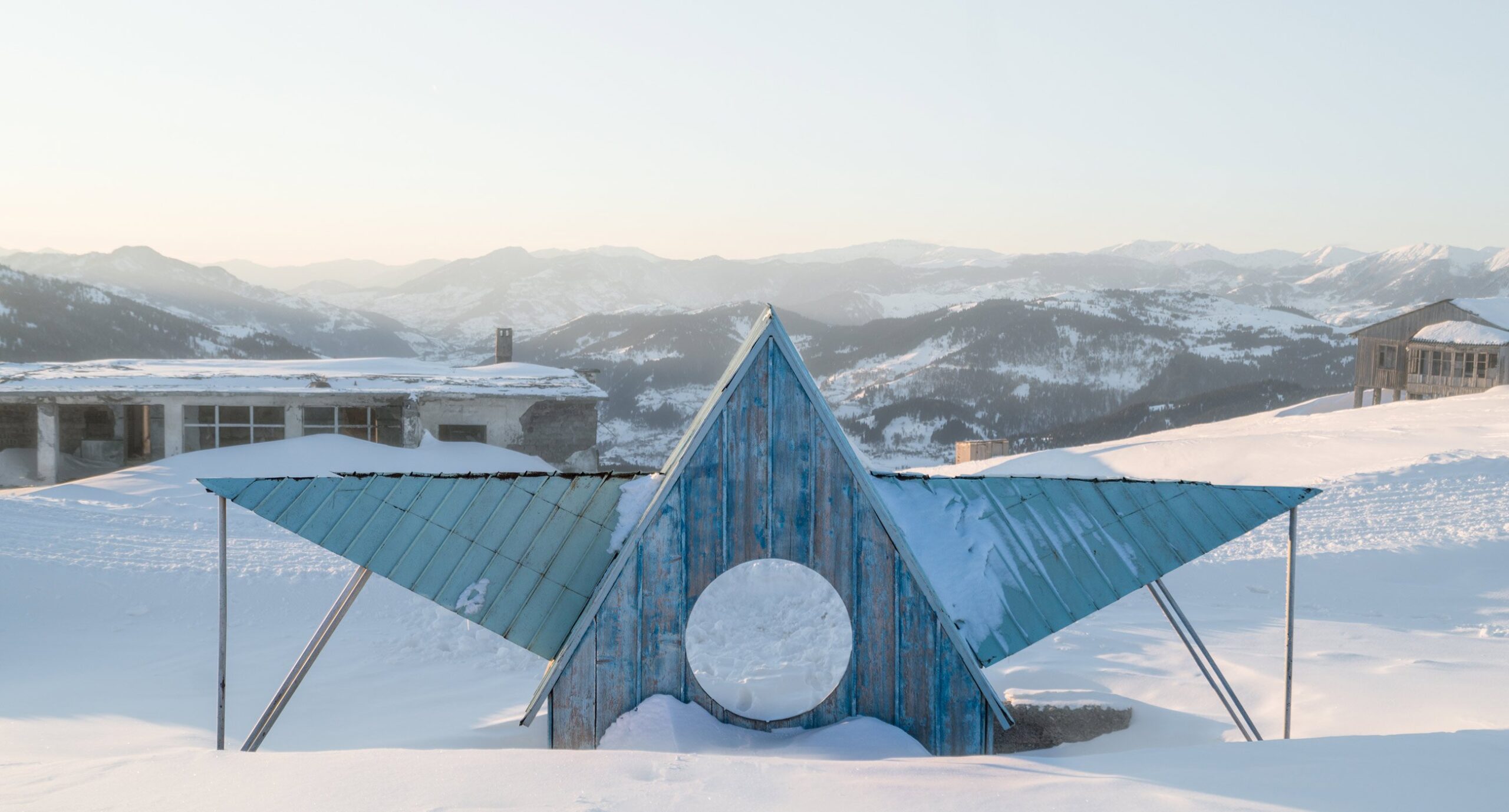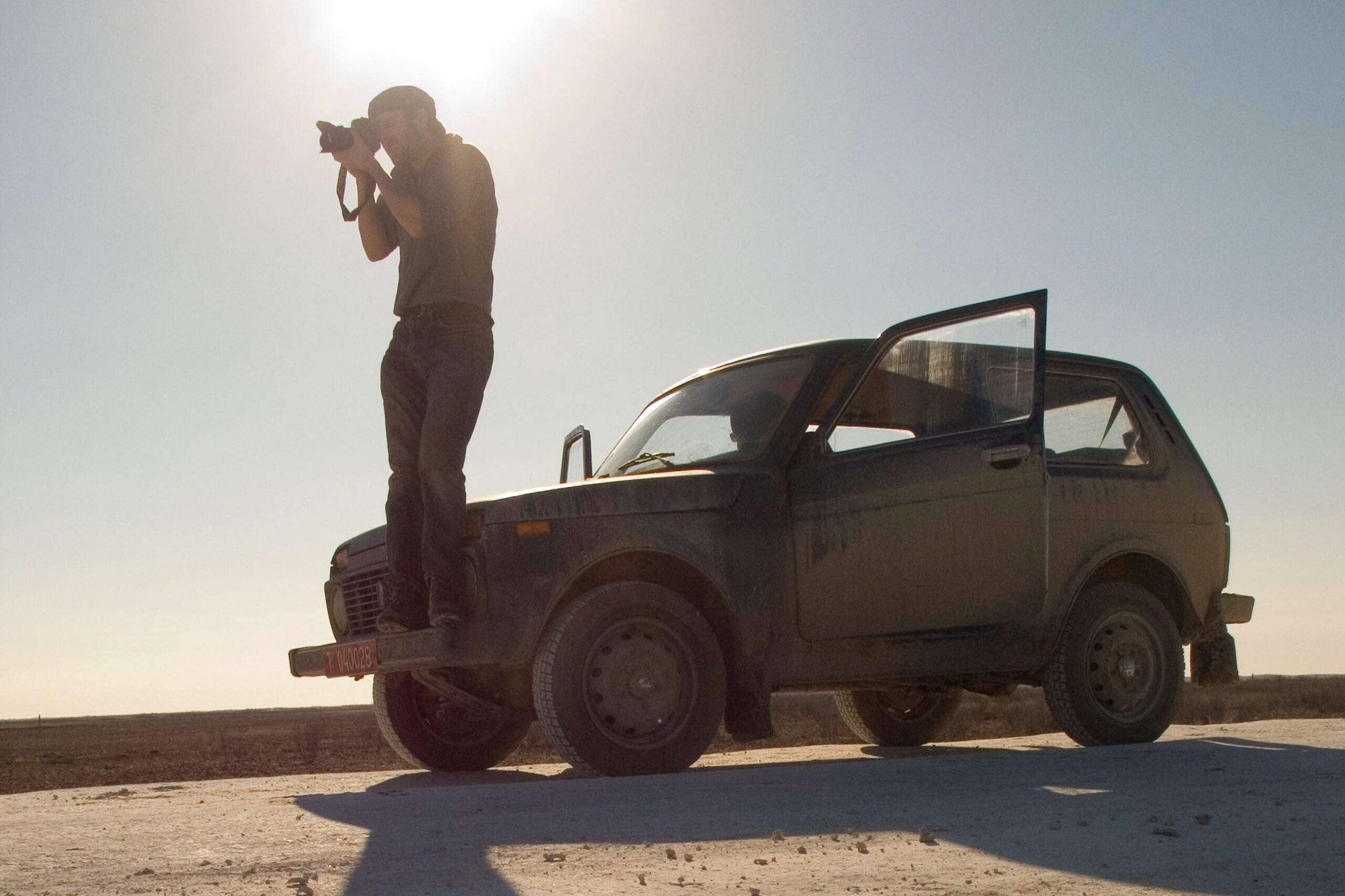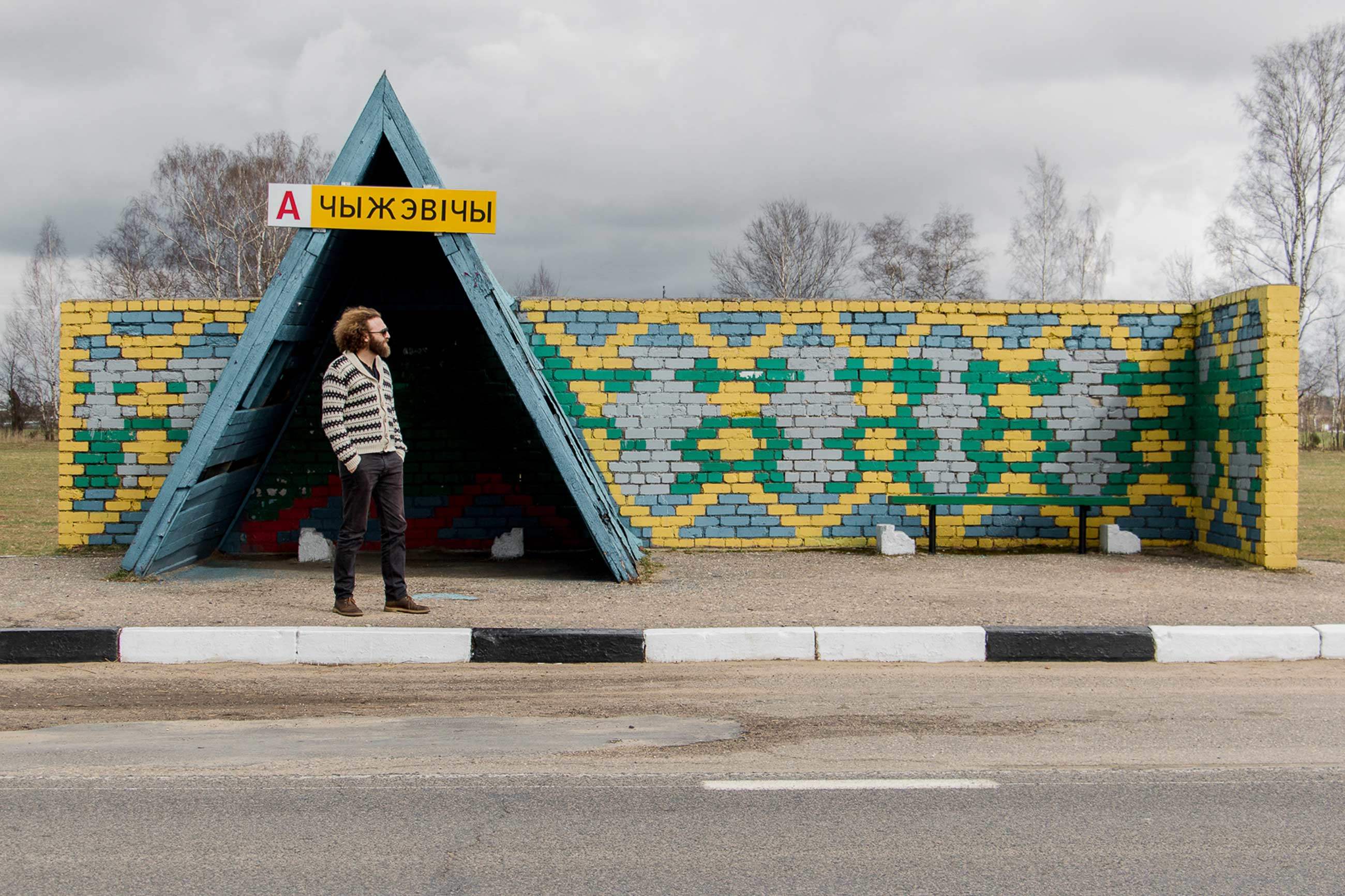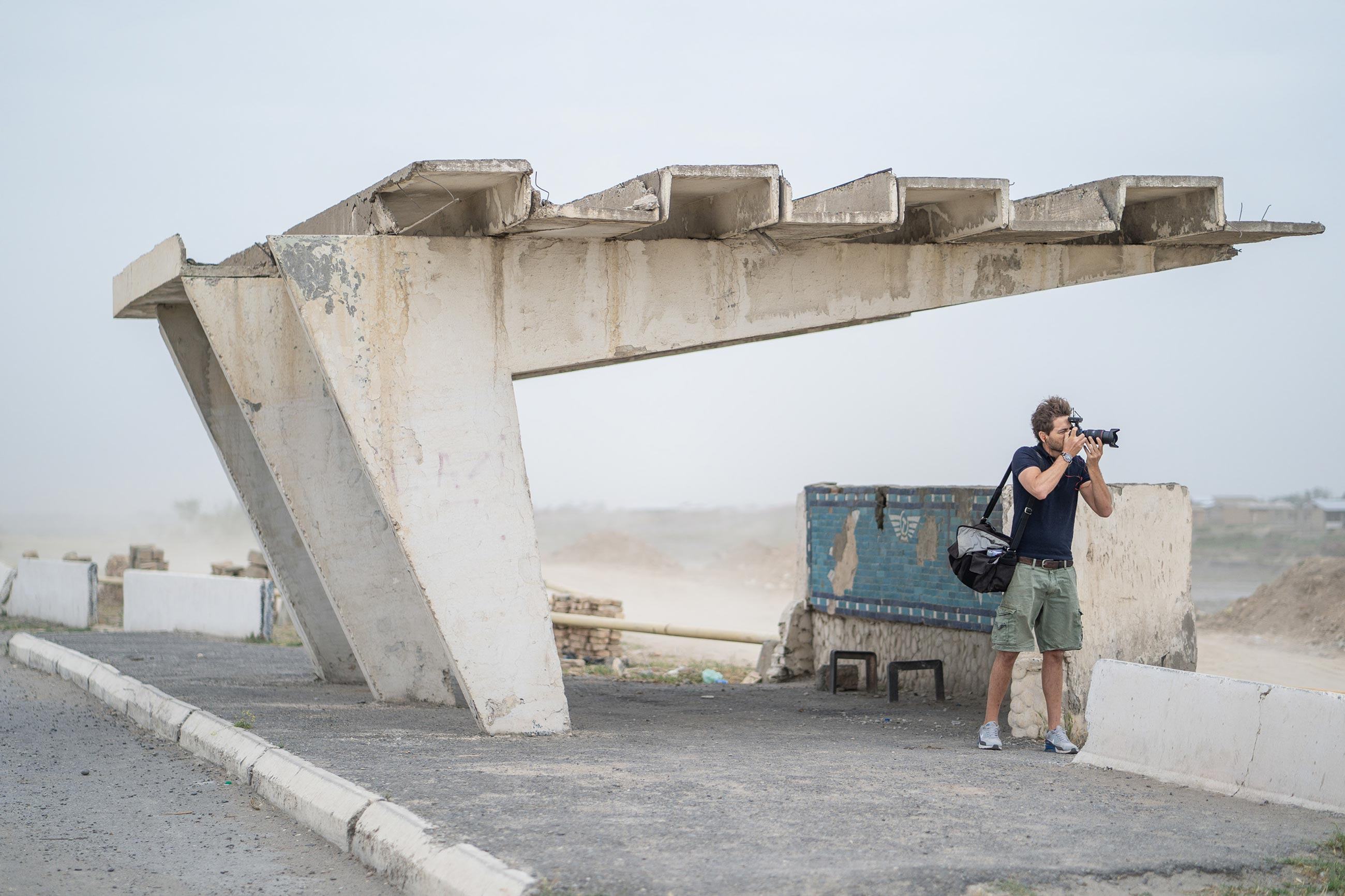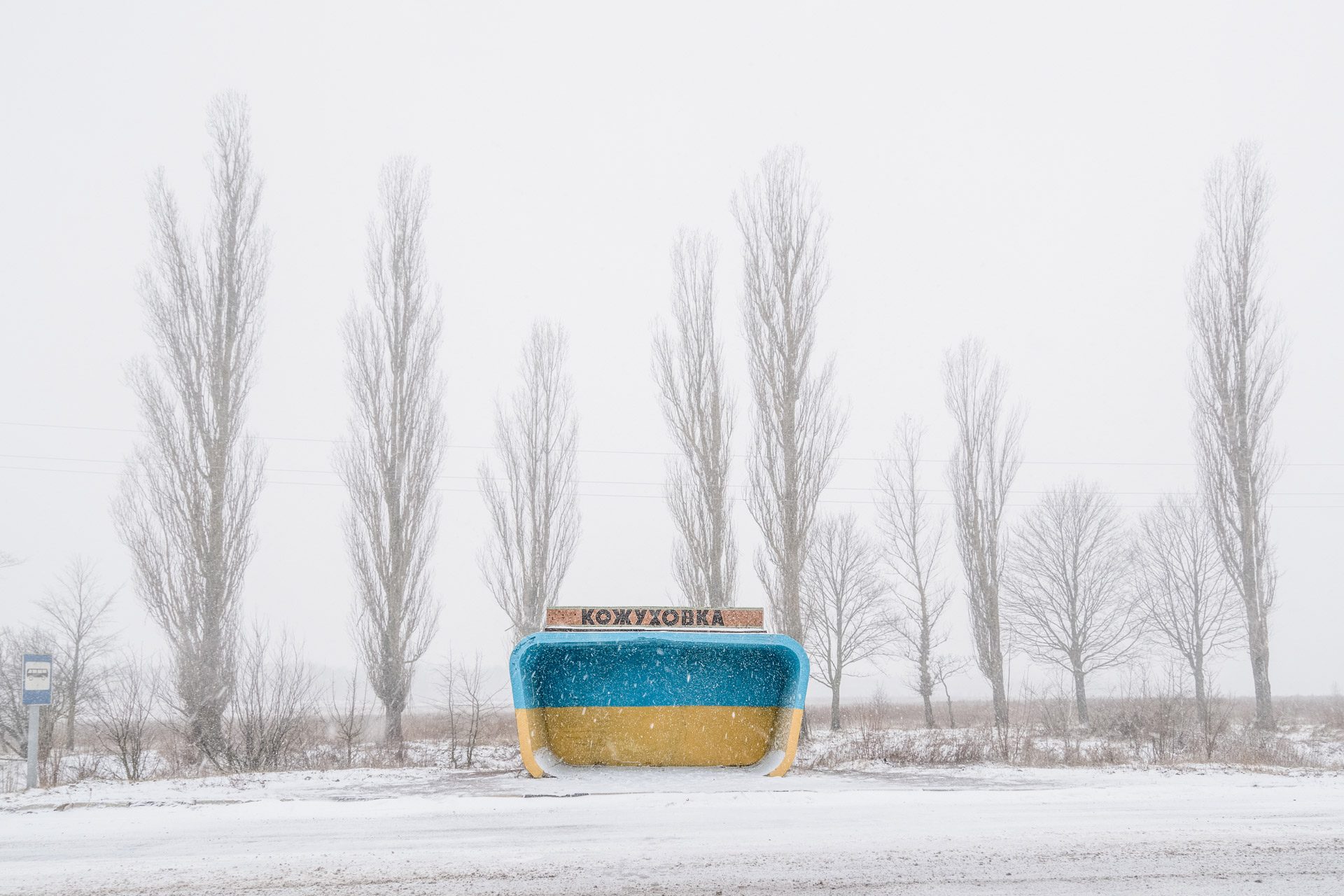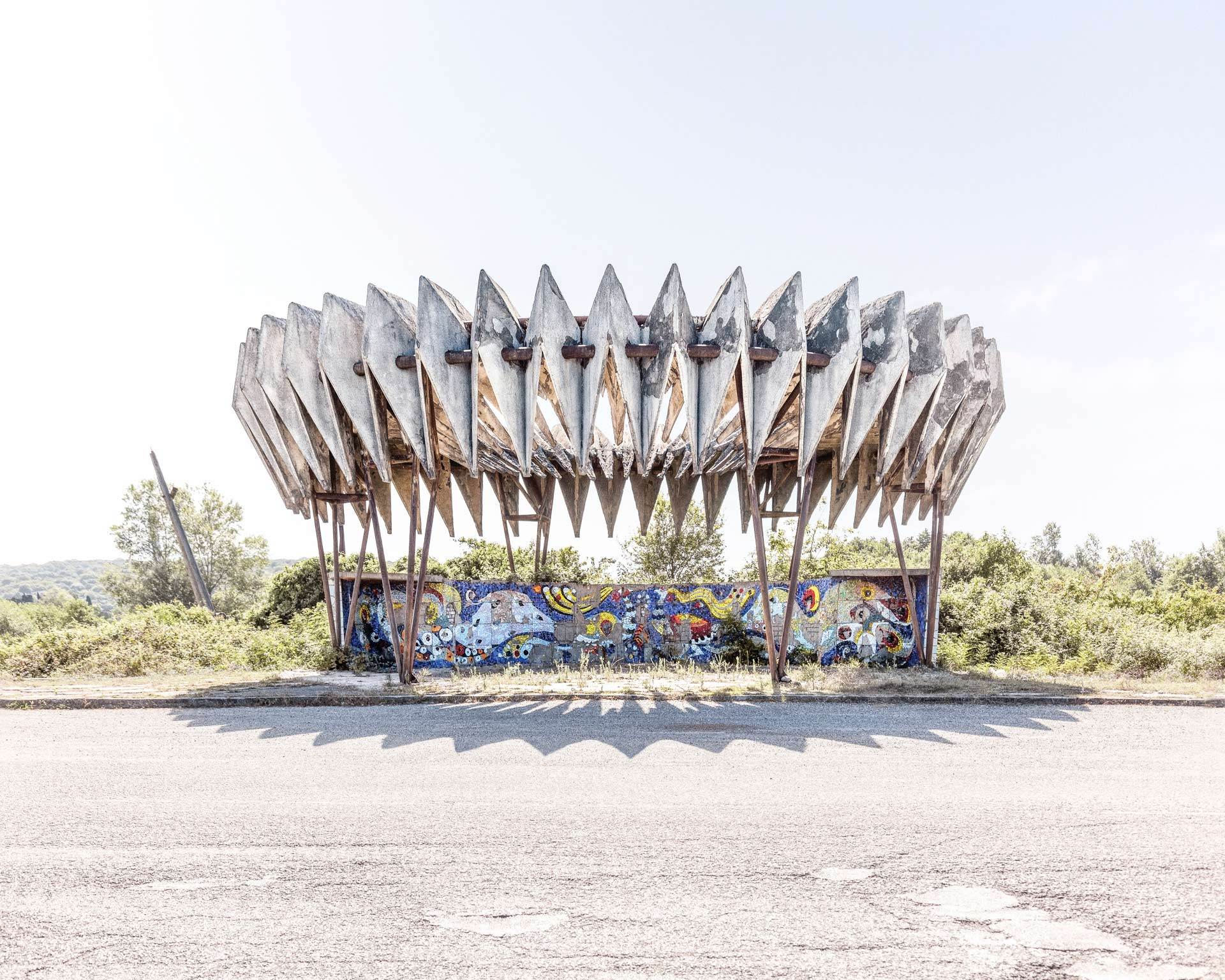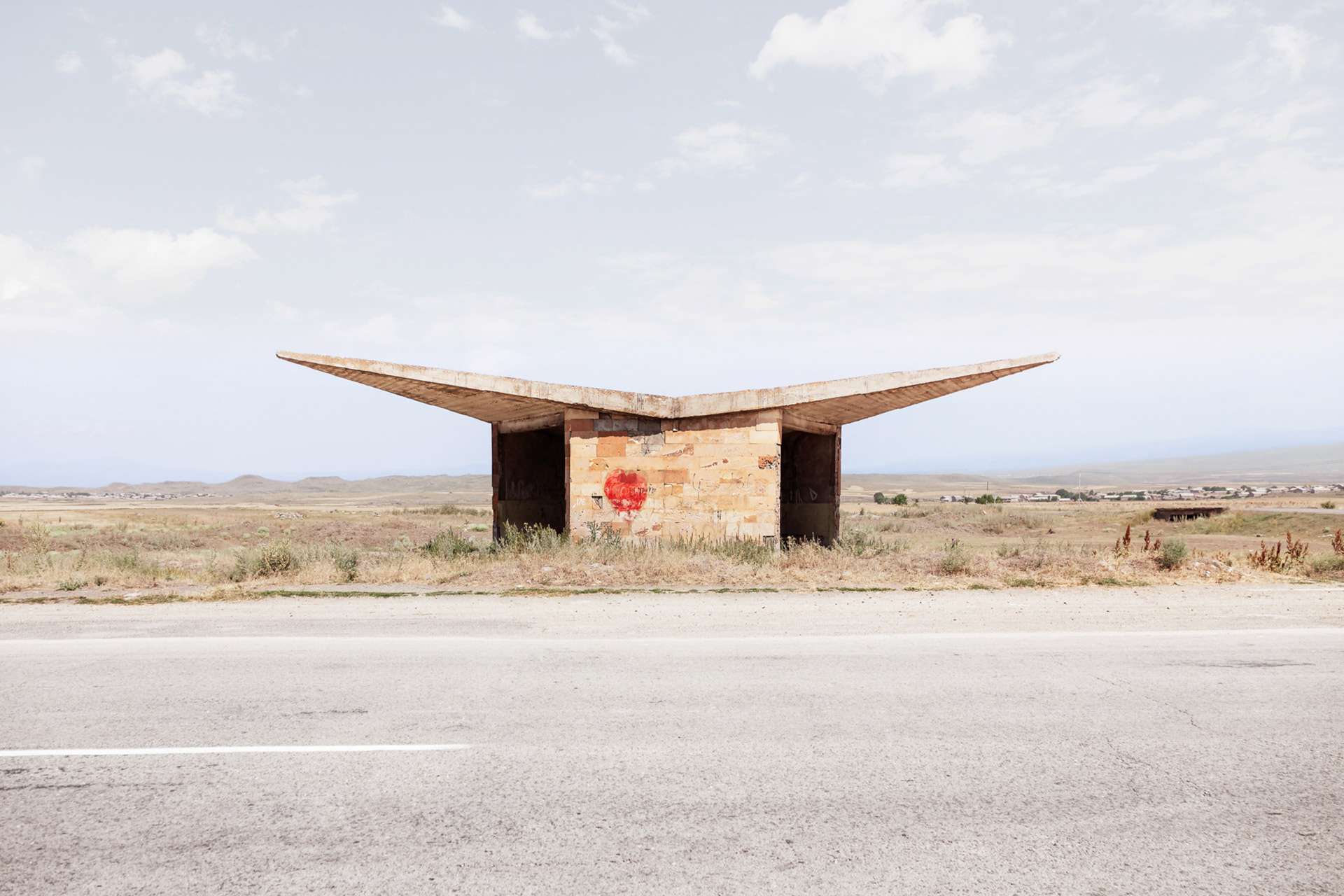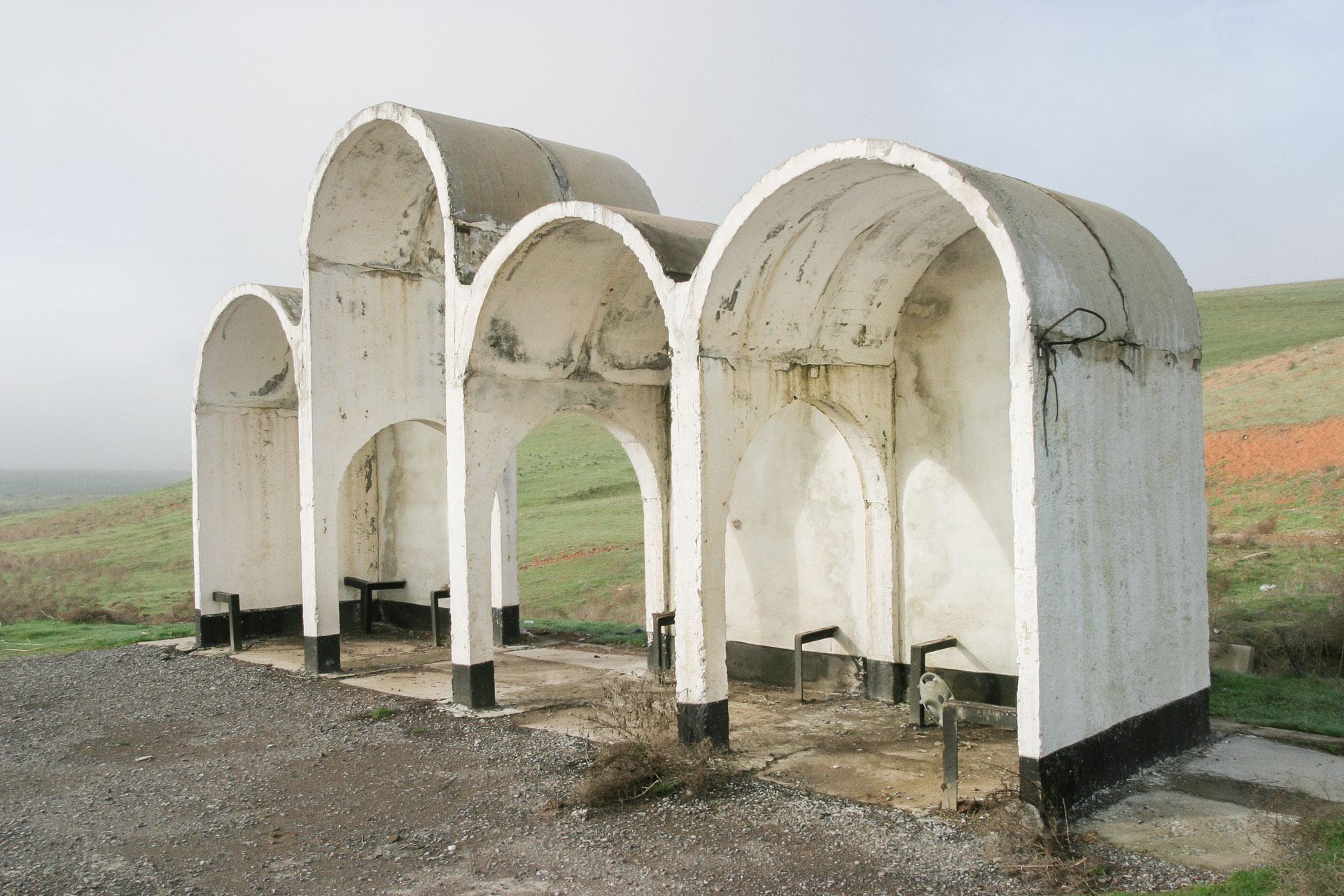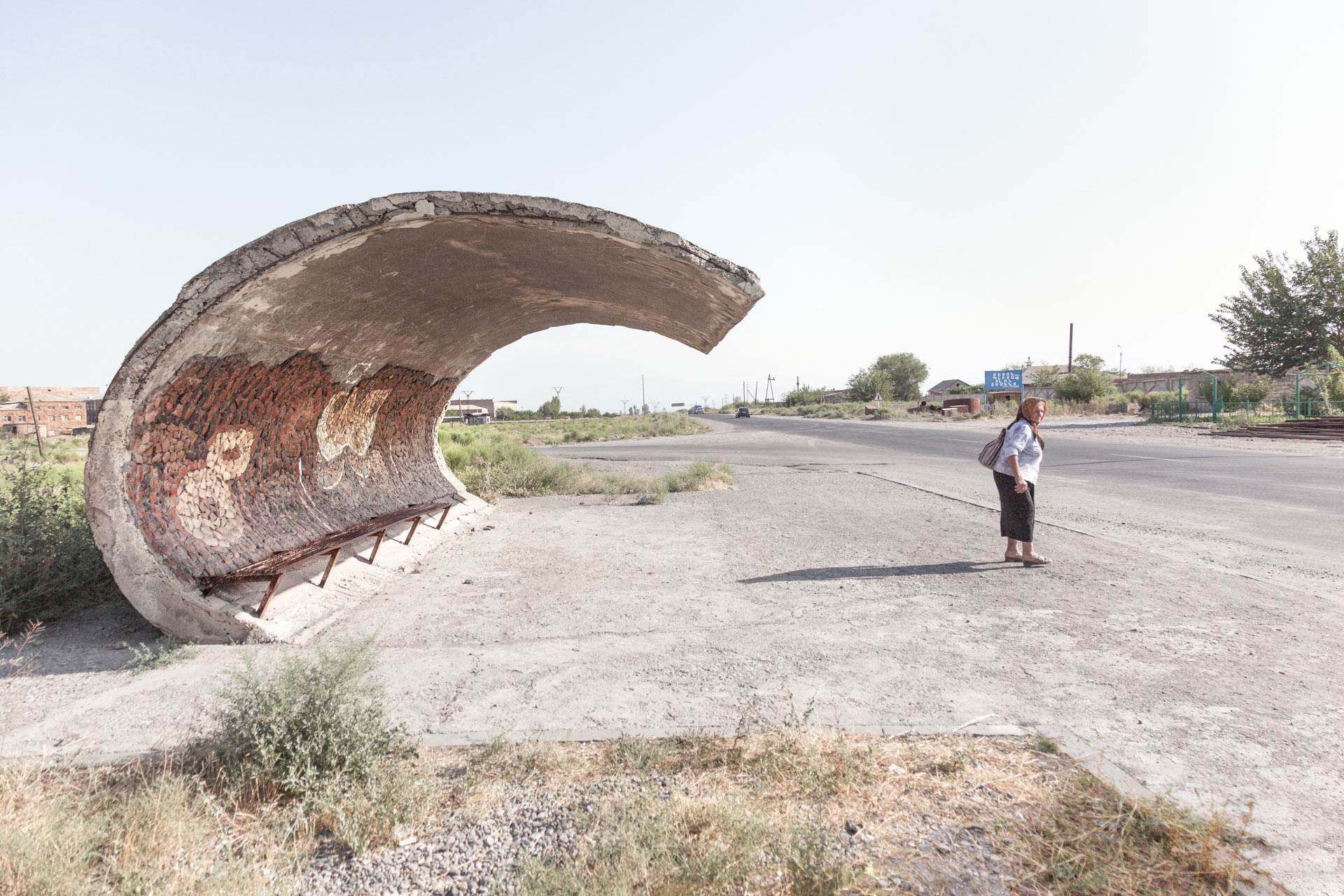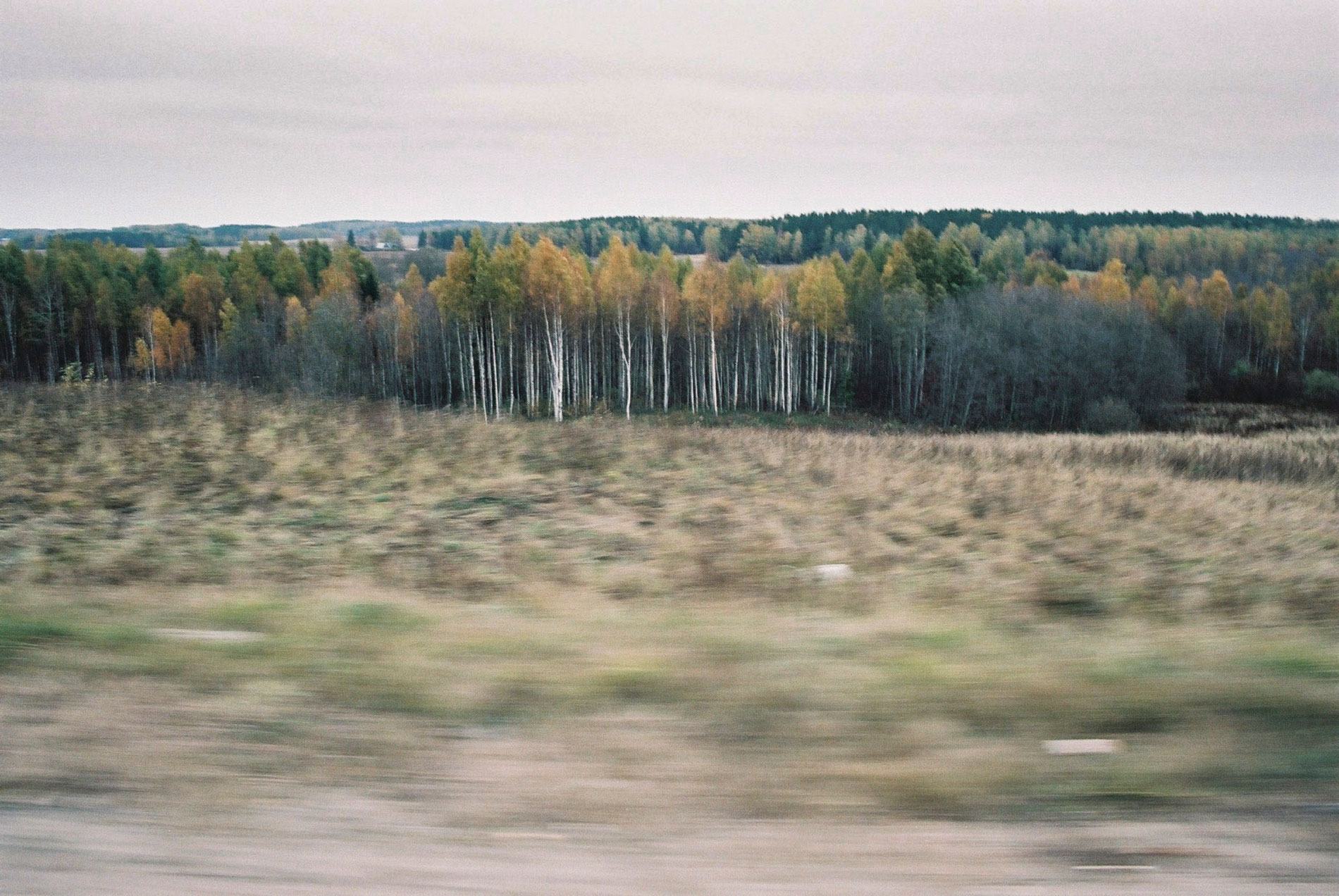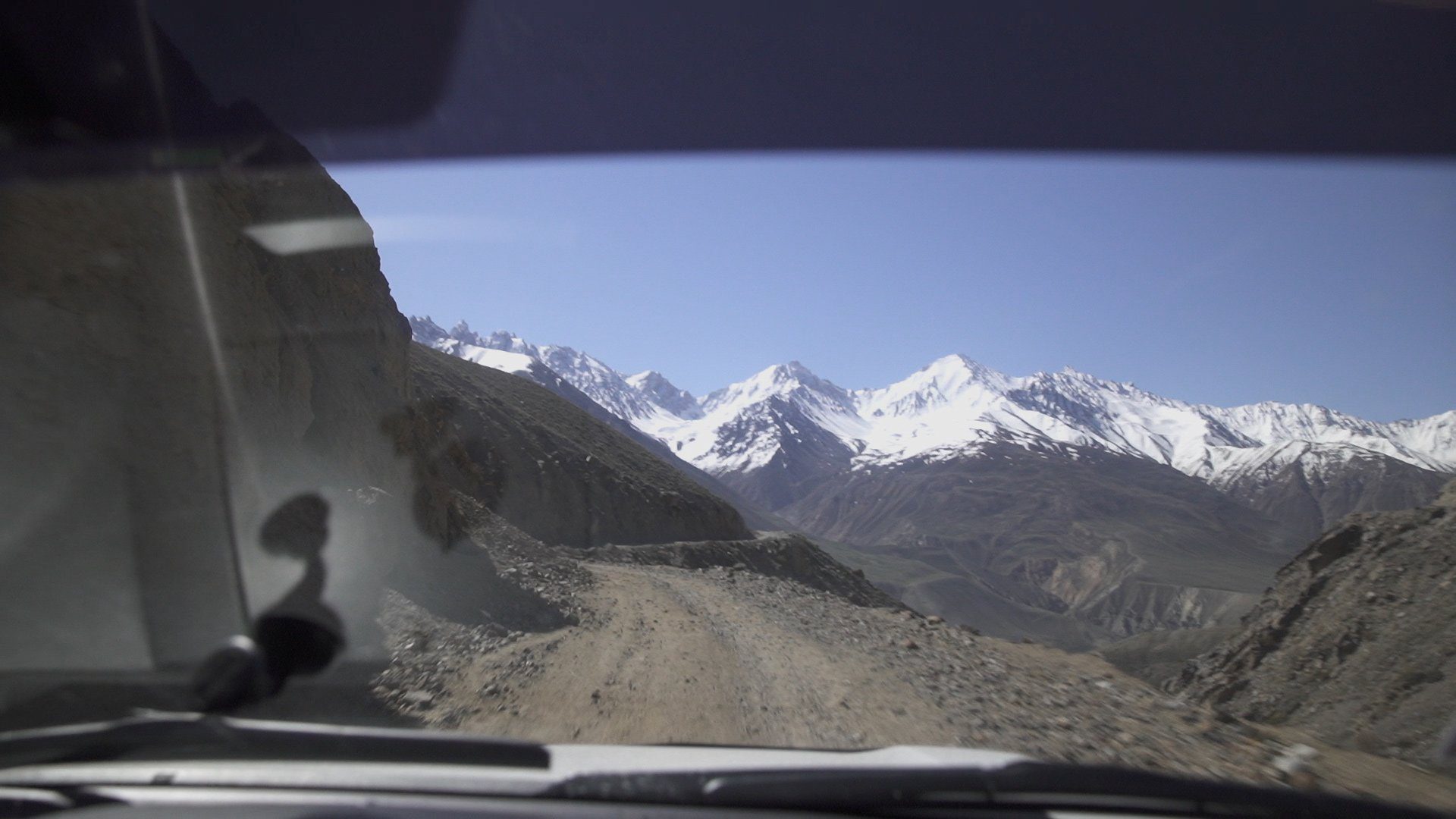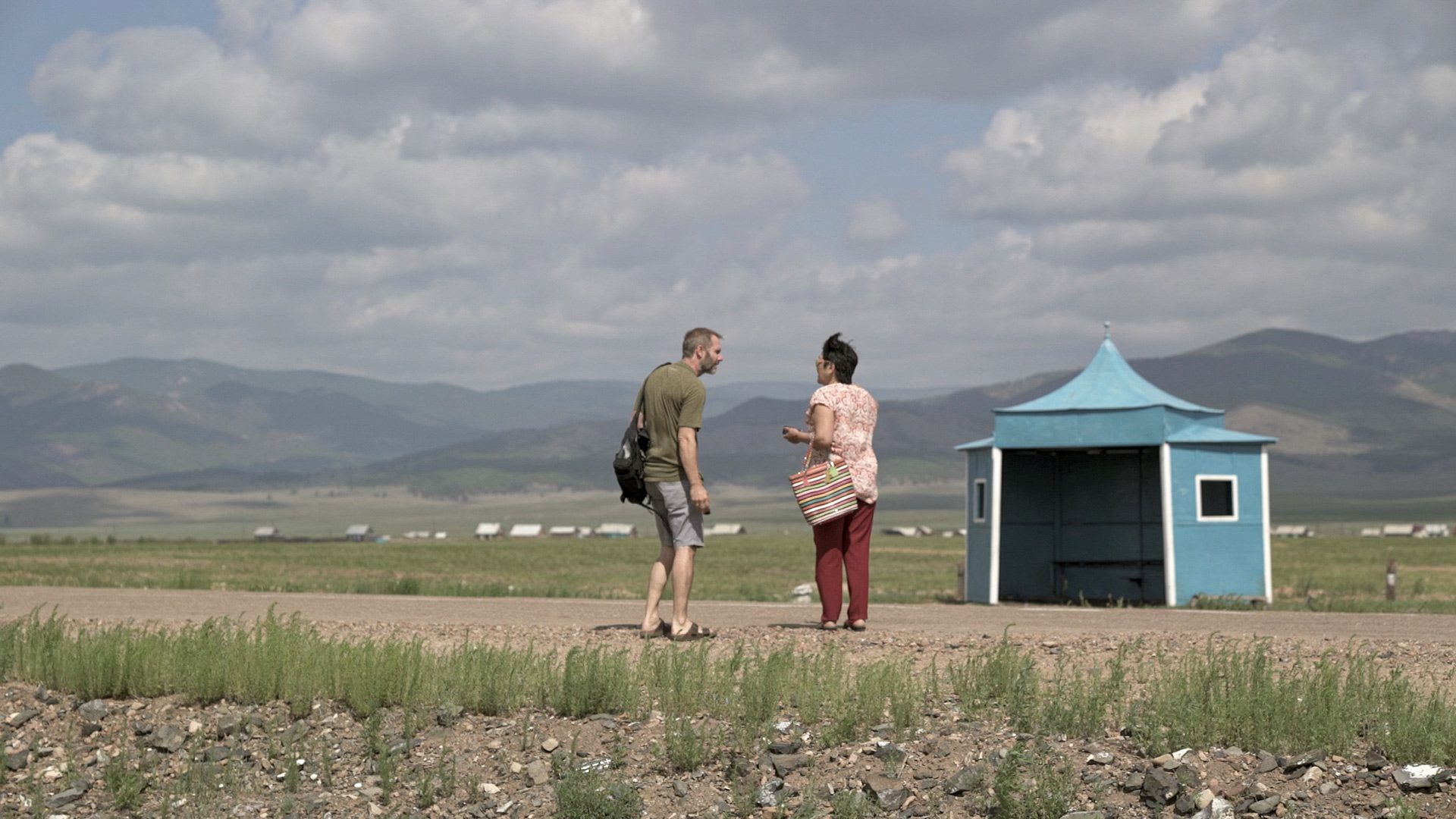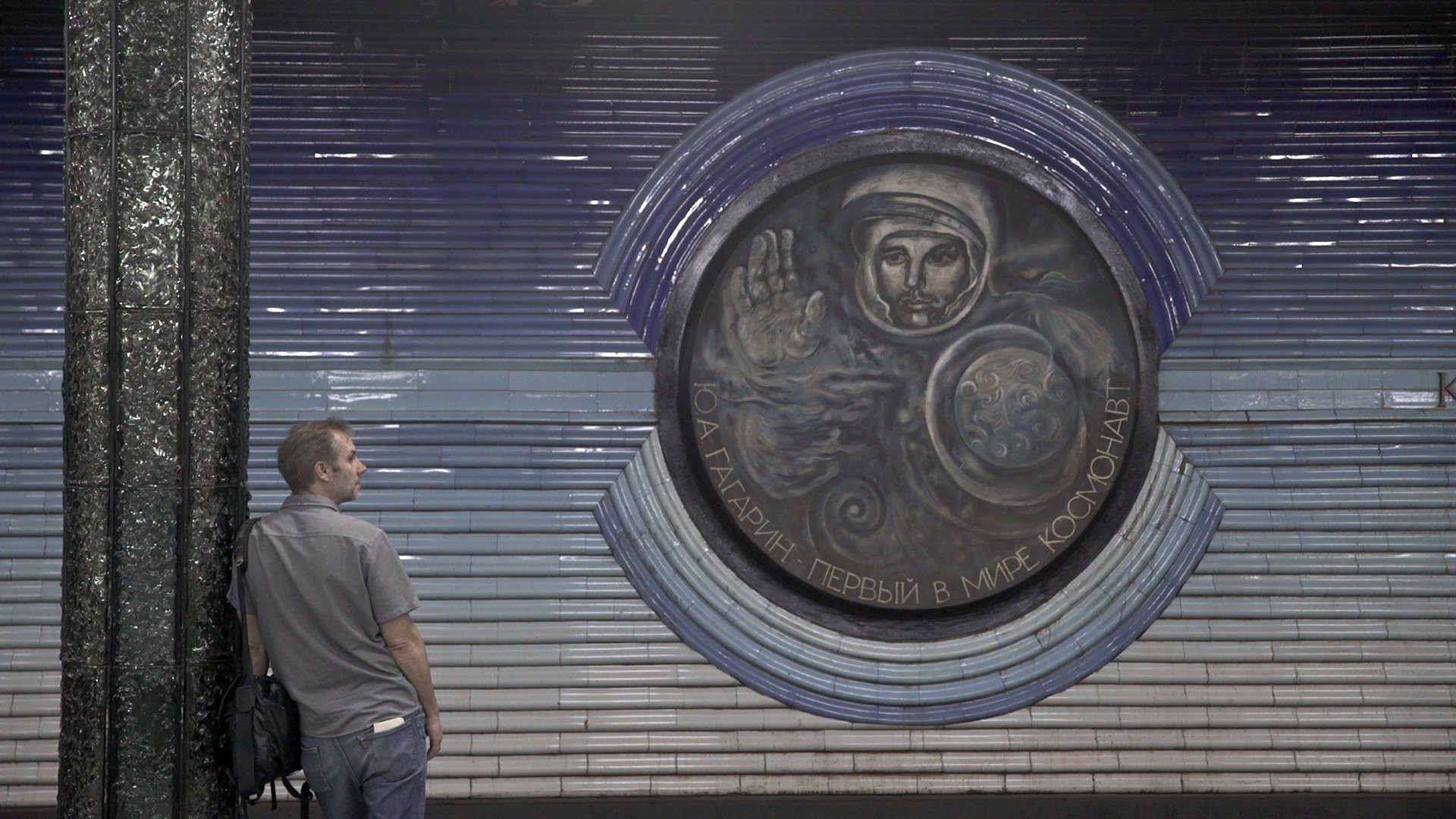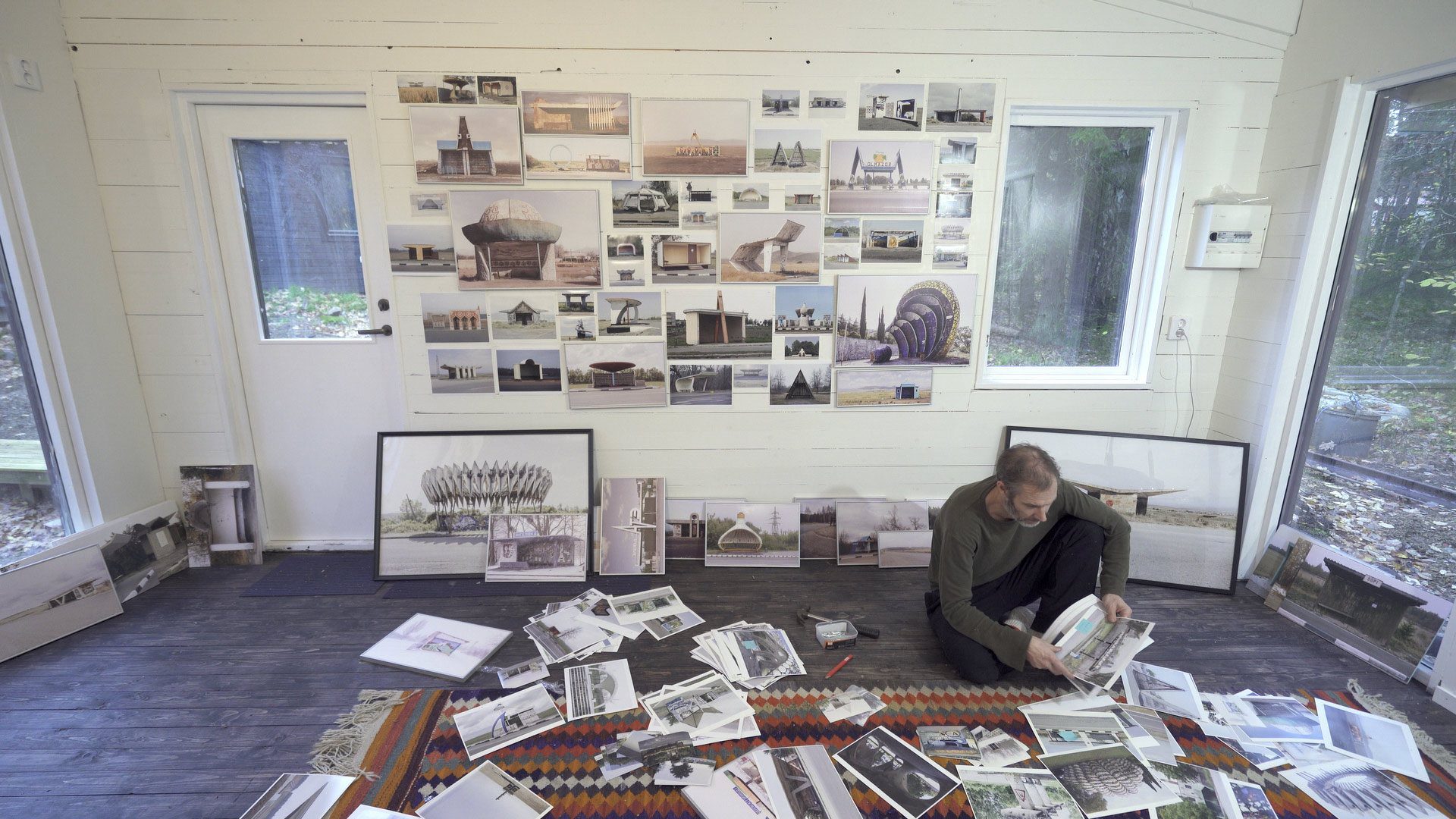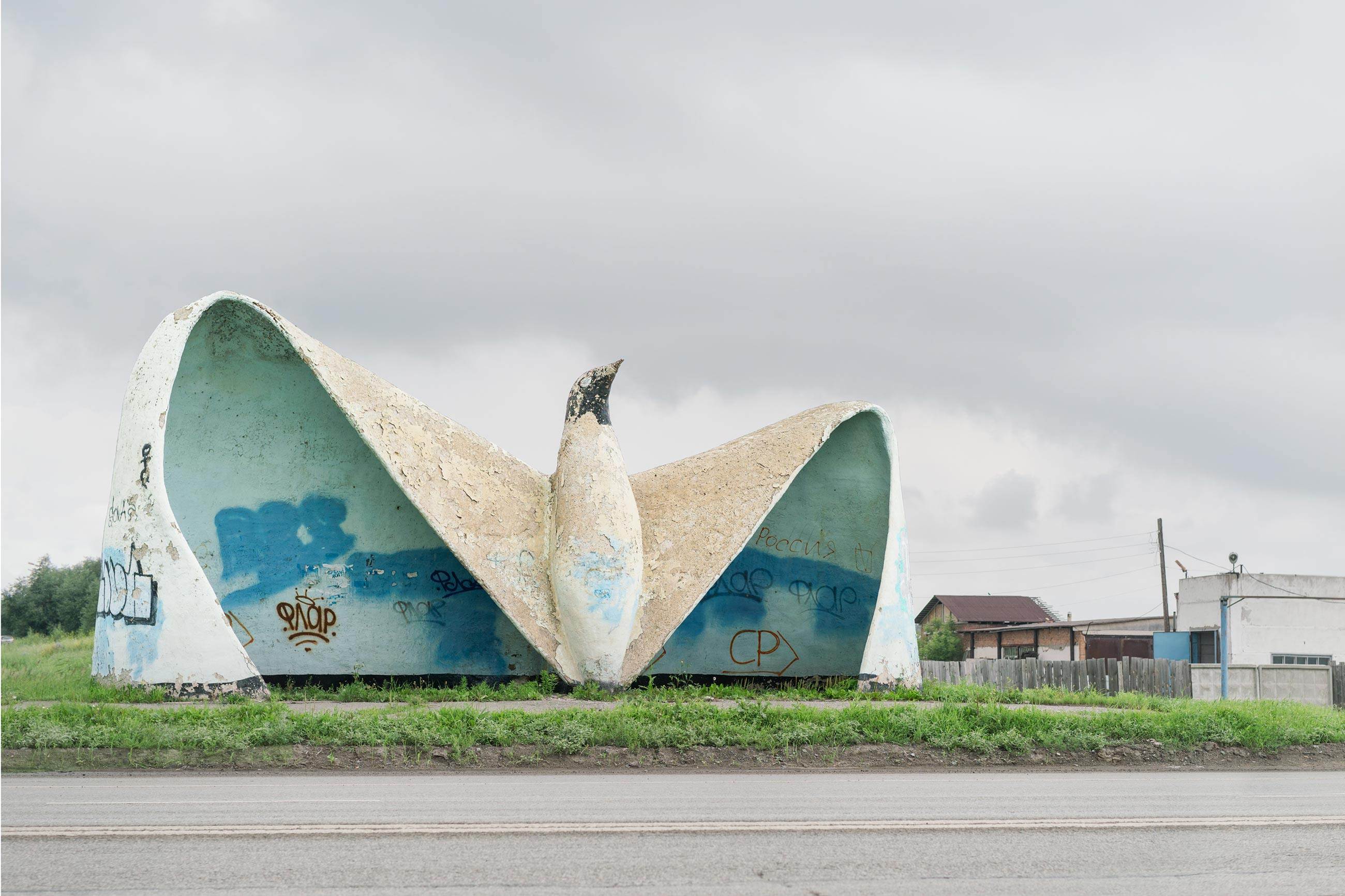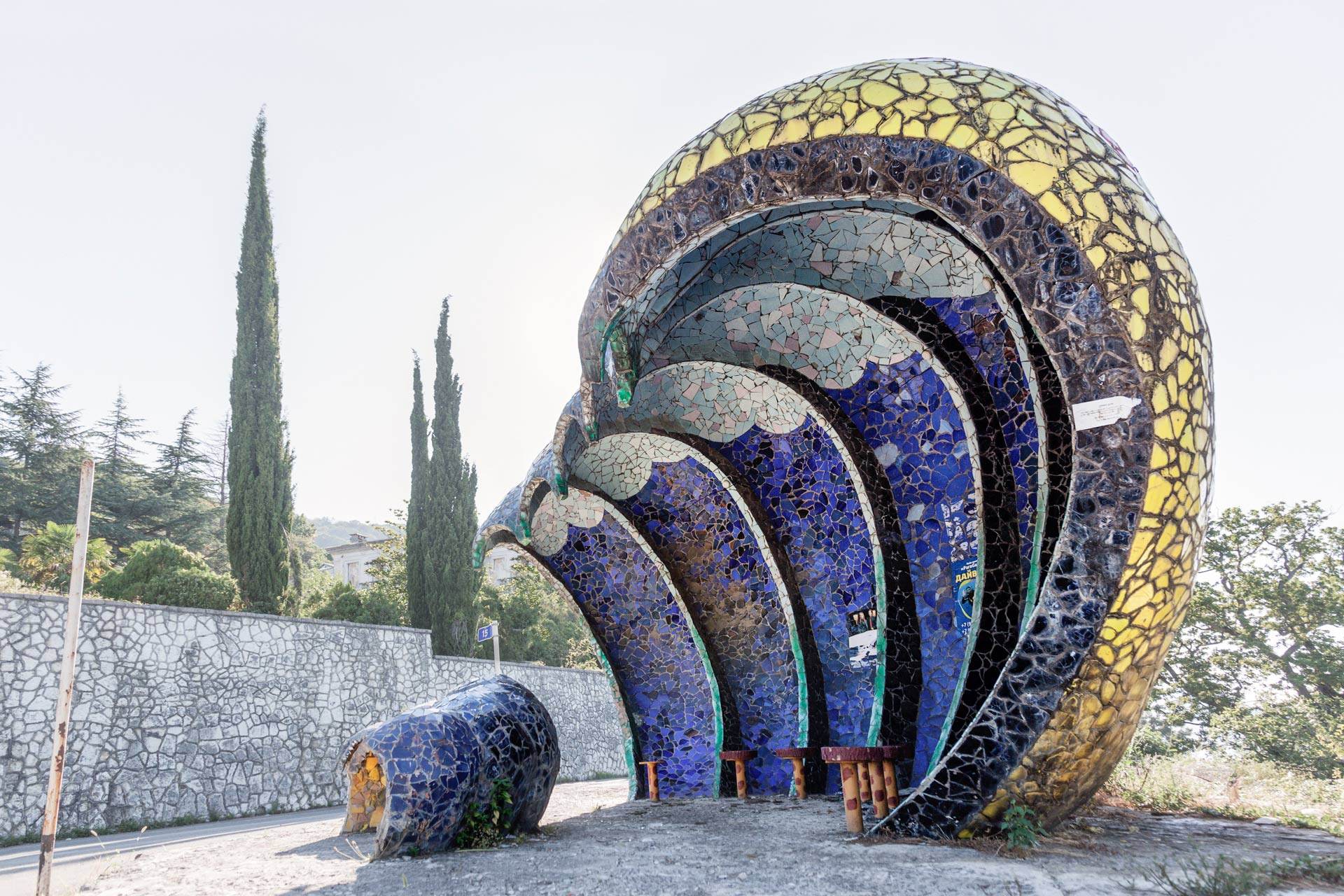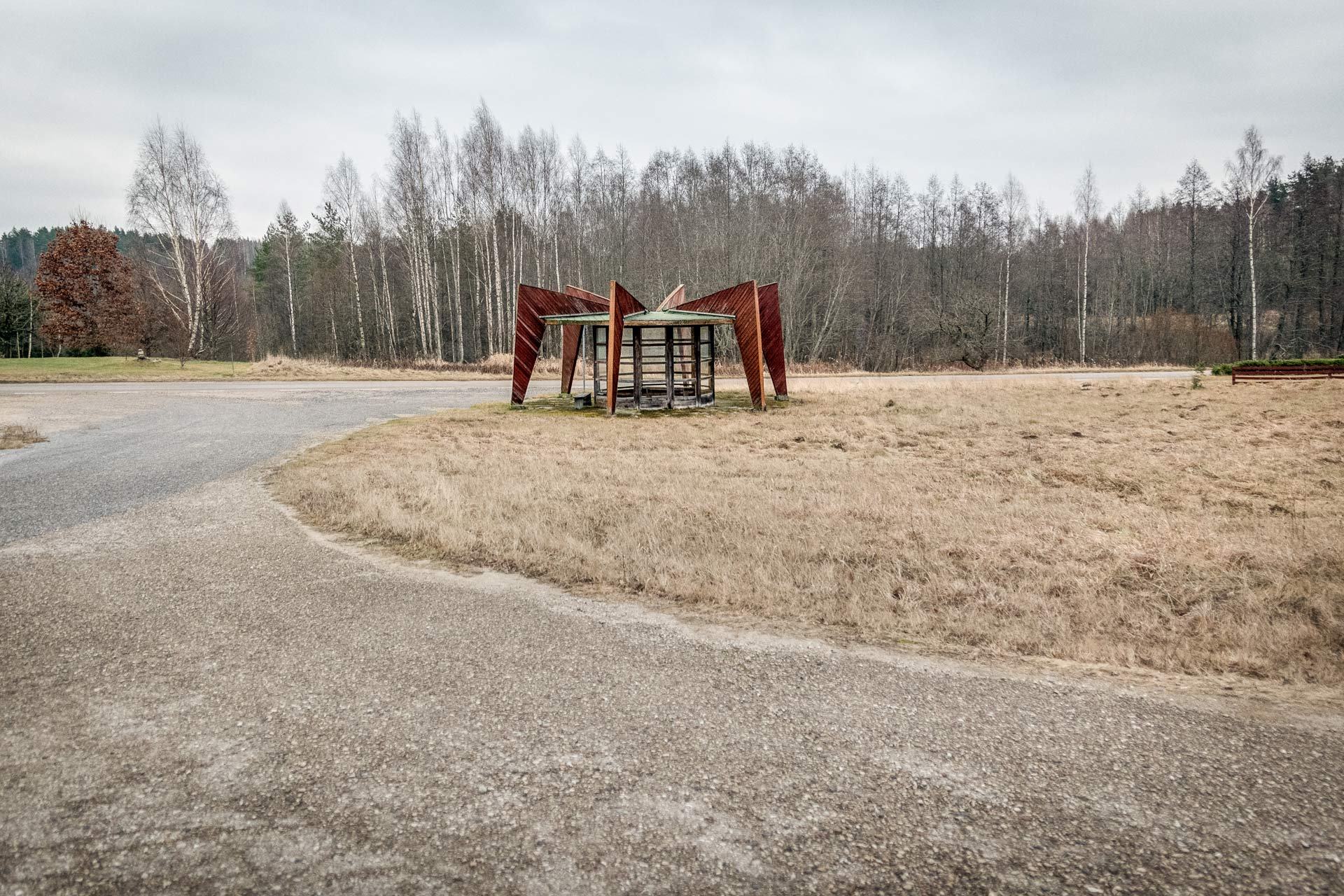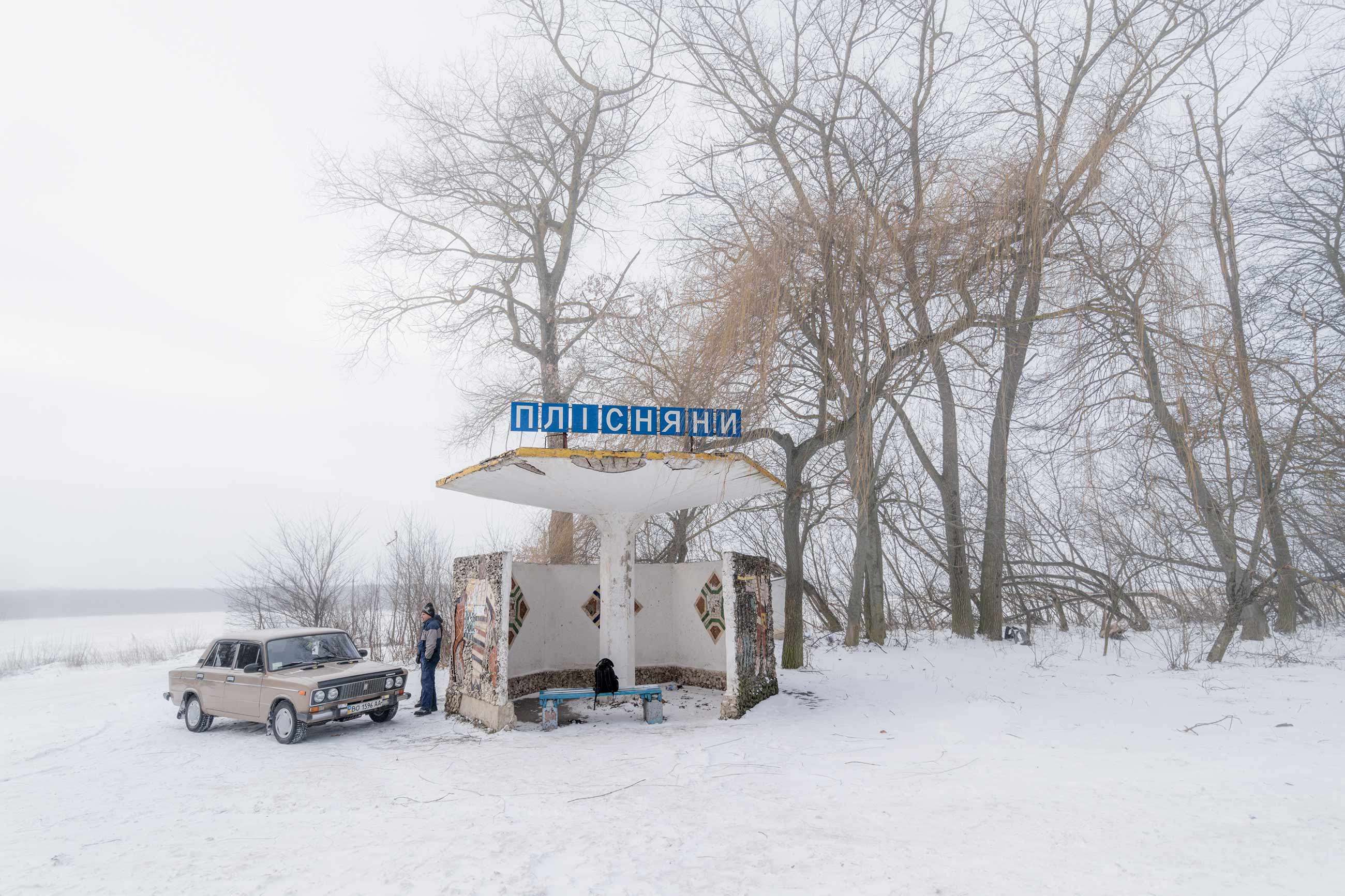The German photographer Christopher Herwig started photographing bus stops about twenty years ago, and since then it has become the most important and life-lasting project for him. In 2023, along with Kristoffer Hegnsvad, he released the film Soviet Bus Stops, which tells the story of the travels in search of bus stops throughout the so-called post-Soviet space, from Ukraine and Georgia to Russia and Kazakhstan. Zaborona’s editor-in-chief Katerina Sergatskova talked to the photographer about the Soviet legacy, destruction, and why a bus stop is better than a million-dollar architectural project.
How did you decide where to go and what to publish? The first edition of the book “Soviet Bus Stops”, for instance, did not include Russia. Why?
It feels weird to answer these questions now in the light of everything, in sort of this geopolitical situation. But the reason why Russia wasn’t in the book seven years ago was that I wanted the bus stops to be more about the individuals and the fact that the Soviet Union was not about just Russia, that there were people and a lot of other republics. Many people, when they hear about the Soviet Union, they just assume that history has only one face and side of it. And I just wanted to showcase that there were things in Kyrgystan, that actually celebrate Kyrgyz culture. So I didn’t feel like I needed to put Russia in the first book.
We put Russia in the second book because we kind of were looking for a reason to make a second book. I’ve had so much fun making a first book! There were two friends of mine, Kristoffer Hegnsvad [director of the film “Soviet Bus Stops”] from Denmark ad Nikolas Zajcek [cameraman] – it was not only me not wanting to stop looking for bus stops, but more reasons to continue. They agreed to join me in making a second book. It was more like a road trip with friends. So, basically, we traveled across Russia to Vladivostok, and it also involved going back to Ukraine and Georgia, mainly in the winter. There were a lot of bus stops that I missed.
After the Russian invasion of Ukraine, people started talking more about decolonization, especially in culture. I think there is some kind of dissonance between Soviet national culture and the culture how we see it from the perspective of decolonization. In your opinion, can we really look at Soviet art through the optics of decolonization?
It is a tough question to answer in many parts because for me, what makes bus stops very interesting is that so many of them are not alike, and not all of them alike in the history behind them, in motives behind who’s commissioned them, who made them. Sometimes it probably could have more spirit of colonization in some of them than in the others, sometimes there were just farmers or schoolmates who made them. I like to think of them as individuals from the area or from the country who made them. I like the fact that they are not so political, in my opinion.
But, it is just a bus stop at the end of the day… And I think if someone wants to tear it down because it represents colonization or imperialism… Well, it is just a bus stop. I don’t think that most people look at it as nostalgic in a way that it’s bigger than it is. I understand that in these circumstances people can have bad memories of them, and sometimes they get angry with them. It is totally reasonable. There are a lot more things going on at the moment than bus stops, unfortunately.
Well, I’ve seen in the film the bus stop on the road to Alushta or Yalta in Crimea. I’ve been living in Crimea, it’s the place where I grew up. Maybe there was stuff that I didn’t like at the moment, but then, after you understand that you really do not have it anymore and you don’t have access to it, you see that bus stops differently. It changes everything.
How does it feel for you to capture these moments of public art that you know for sure will disappear somehow? Possibly, you have heard that some of the stations from your book were demolished?
Yeah, they disappear crazy fast. I continue to get different messages – oh, check this bus stop in your book, it’s gone. I think there are just a few people in governments that think that it should be preserved or maintained. I often do not understand why people look at them and do not see them the way I do when I stand in front of them and – wow, this is so different and so original. I get more inspiration sometimes from one bus stop than from much bigger projects that might cost millions of dollars. They are so different from the things I’ve seen!
For me, it is a shame that we don’t keep and celebrate them. But at the same time, I think the reason why I photographed so many of them is that I realized that they were getting destroyed. The more of them I could find, I felt a certain pride that I did actually find so many and managed to document them, and it keeps their spirit alive even if the actual building is not going to stay there.
I think the actual reasons why people destroy them sometimes is that they think they look ugly, or they are stunk, or they really run down, and people are using them as a bathroom, and they are actually embarrassed by them.

Shymkent, Kazakhstan. Photo: Christopher Herwig 
Etchmiadzin, Armenia. Photo: Christopher Herwig

Estonia. Photo: Christopher Herwig
I think you cannot see some things in a photograph, but when you are there, there is a lot of garbage, and people actually go to the bathroom around it or behind. It looks like trash. In my photographs, I try to make them not look like that, I try to make them look more like a hero, not a ruin or a sad thing. And sometimes people think that you are trying to make fun of those places when you’re photographing something outdated and old.
You filmed in Crimea?
Yes, we filmed.
How did you find the way to get there?
It was a few years ago…
But it was already occupied, right?
Yes. It was Nick [Zajcek] and I who went there. We pretended to be tourists with a car, and drove there for two days. It was in the summertime. We didn’t include much of that time in the film, it was a bit of a strange experience. Many people on the streets, many people at the beaches. It felt a little bit surreal.
Did you get permission from the Ukrainian side or you went from Russia? It is not a comfortable question, but still an important part of the story.
I’m sorry. I need to be honest. I do realize we went in the wrong way. We flew from Moscow, and we thought it was the only way we could get there. We felt like if we started asking too many people for permission, we would never get a chance to film and photograph the material. I realize now that it was not legal [way] to go to Crimea.
When you see the film, you realize that you are in the countries that are no more in the Soviet Union, but sometimes you have a feeling that you are. You show these bus stops and people who don’t like that you film something in public, which is very Soviet, and the war, and annexation of Crimea – you couldn’t get there legally because you were afraid of the authorities. Do you think that your efforts were worth it?
I think it was worth it. I just told myself – they are cute bus stops. I tried to convince myself that at the end of the day, I did not do anything sinister and I wasn’t trying to make anyone look bad. But we had issues that we didn’t show in the film. But [things like that] happen. Things were challenging, but I did a book about metro stations. And I got a lot more troubles with that. Because there are always security guards, and bus stops are in the middle of nowhere, it’s more peaceful.
You made so much footage of different places through the years. Does that require some kind of fanaticism? Why do you love bus stops so much?
If I was just collecting something that was the same… But I was trying to find one that would be completely different from the other. For me, it felt like it actually made a whole collection. It is a kind of activity, to look for a bus stop somewhere far away – you get a feeling like you are exploring, even though it is just a bus stop.
I don’t have a project like that right now, and that is even more depressing than being crazy about looking for bus stops! But it’s time to move on. It’s been almost 20 years.

Omsk, Russia. Photo: Christopher Herwig 
Gagra, Abkhazia. Photo: Christopher Herwig

Niitsiku, Estoniia. Photo: Christopher Herwig
What are your lessons learned from the bus stops?
I think the big lesson that was learned is that it really opens your eyes. I don’t think that people often take the time to really just look at things that aren’t what you are expecting to appreciate and things that maybe are not extraordinary. But give it some time, and you can see a different picture. I started thinking of bus stops as heroes. Looking at it as a hero gives you much more joy.

Plisniany, Ukraine. Photo: Christopher Herwig

